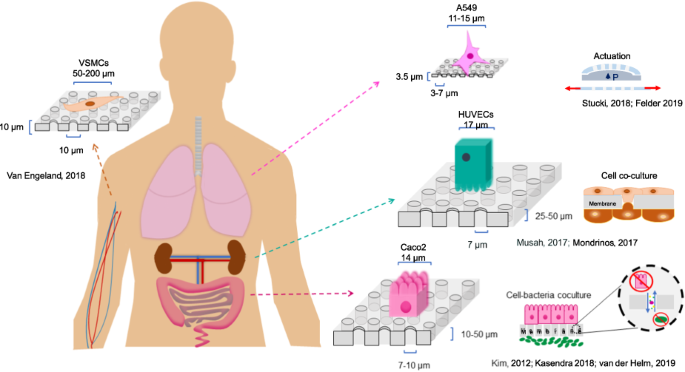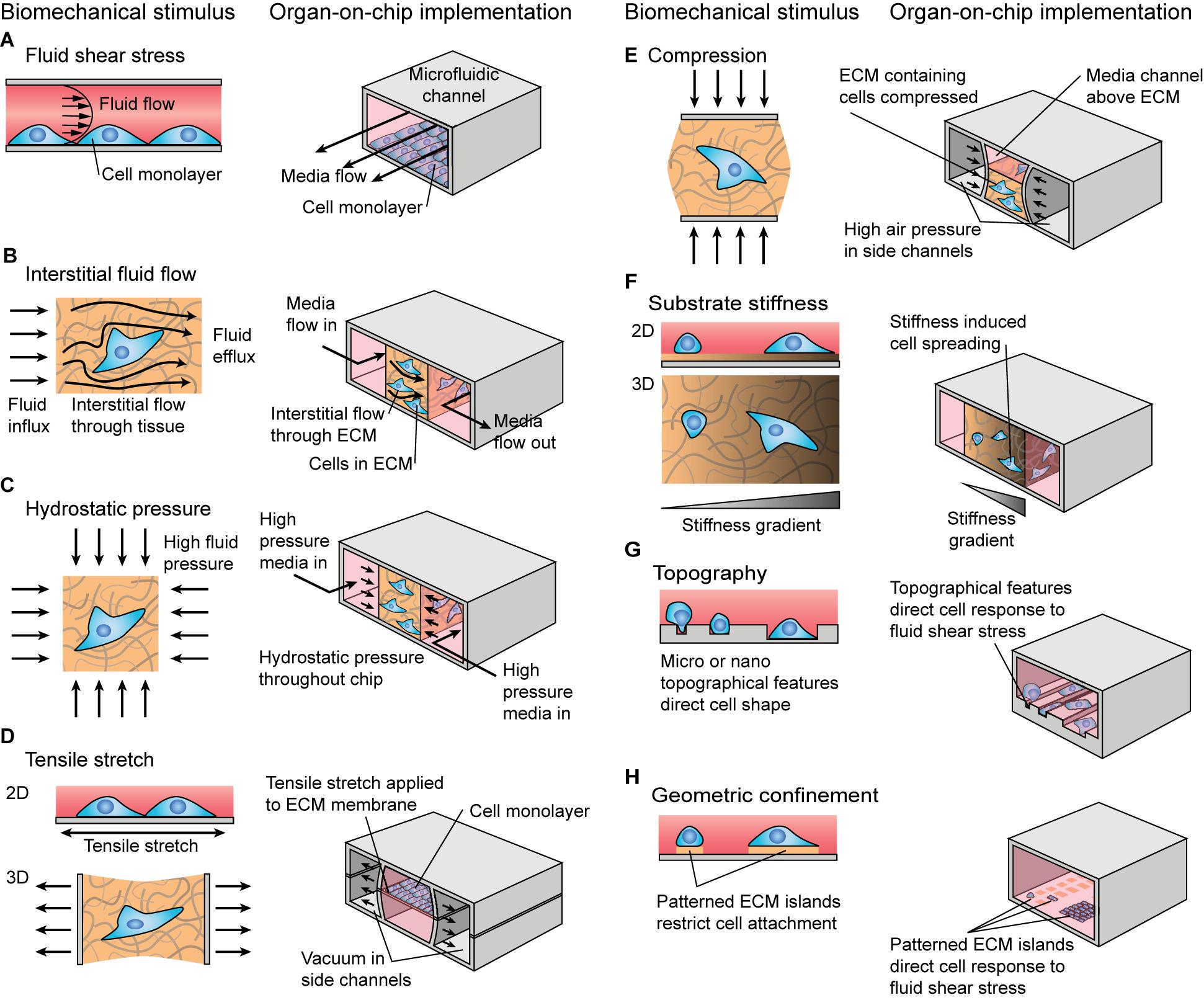4 Polymer & Technology
- Microfabrication of Polymeric Substrates: Techniques such as soft lithography and microfluidics have been adapted from the microelectronics industry to precisely control the architecture and mechanical properties of cell culture environments using polymers like poly (dimethylsiloxane) (PDMS).

2. Reconstitution of Complex Tissue Interfaces: Polymeric biomaterials have been engineered to mimic the intricate three-dimensional structures of human tissues. This includes the development of devices that replicate the endothelial-epithelial interface in organs like the liver and lungs, improving the physiological relevance of in vitro models.

3. Dynamic Mechanical Environments: Using polymers, organs-on-chips can simulate mechanical forces such as shear stress, compression, and cyclic strain, which are critical for cellular function and mimic the dynamic physical environments experienced by cells within human organs.

4. Control of Chemical Microenvironments: Polymeric materials in microfluidic devices allow for the creation and control of spatial and temporal chemical gradients that cells encounter in vivo, aiding in the study of cellular responses to various stimuli under controlled conditions.


